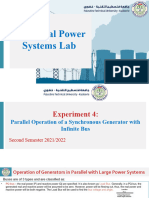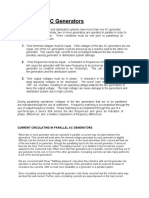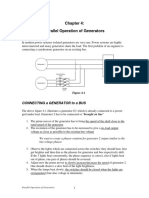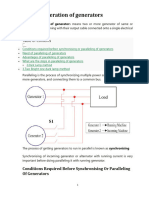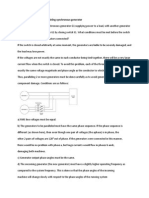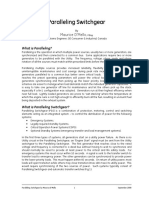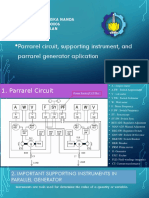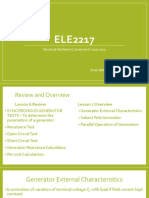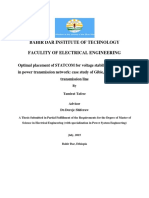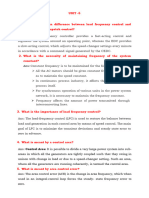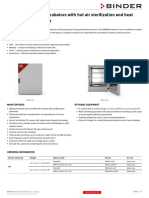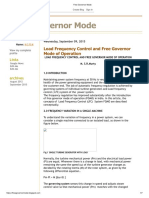0% found this document useful (0 votes)
24 views25 pagesParallel Operation of Synchronous Generators
The document discusses the parallel operation of synchronous generators, highlighting the advantages such as increased load capacity and reliability. It outlines the necessary conditions for paralleling, including equal voltages, phase sequences, and frequencies, as well as the general procedure for connecting generators. Additionally, it covers the operation of generators in large power systems, the determination of equivalent circuit parameters, and examples of calculating generator characteristics.
Uploaded by
Pandara panikaCopyright
© © All Rights Reserved
We take content rights seriously. If you suspect this is your content, claim it here.
Available Formats
Download as PDF, TXT or read online on Scribd
0% found this document useful (0 votes)
24 views25 pagesParallel Operation of Synchronous Generators
The document discusses the parallel operation of synchronous generators, highlighting the advantages such as increased load capacity and reliability. It outlines the necessary conditions for paralleling, including equal voltages, phase sequences, and frequencies, as well as the general procedure for connecting generators. Additionally, it covers the operation of generators in large power systems, the determination of equivalent circuit parameters, and examples of calculating generator characteristics.
Uploaded by
Pandara panikaCopyright
© © All Rights Reserved
We take content rights seriously. If you suspect this is your content, claim it here.
Available Formats
Download as PDF, TXT or read online on Scribd
/ 25





